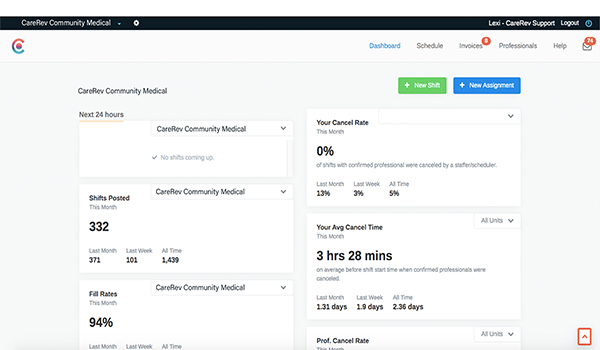
Artificial intelligence, machine learning, virtual reality, and other technologies promise to transform healthcare. But will they transform your organization?
Technology can help physicians, clinicians, and administrative staff do their jobs faster, more efficiently, and more effectively, helping improve patient outcomes and costs. But the fanciest software won’t do any good if it’s too complicated to use or if it requires a team of data scientists to manage.
With so many choices that sound good in theory, how do you evaluate technologies to determine whether they will, in fact, benefit your healthcare system or facility?
Consider these questions before you decide to invest in new technology.
1. Do we really need it?
Don’t fall victim to shiny objects. They may be hot, but just because everyone is talking about blockchain doesn’t mean your hospital needs it right now.
Instead of focusing on the object, focus on your organization’s mission. For example, how will this technology help us provide the best quality care? Next, think about your organization’s challenges and goals. For example, how will this technology keep our nursing department optimally staffed?
Here’s a tip: create a short statement that identifies the very specific problem that the technology will solve, and how it will do so. This will also help later when presenting ideas to leadership.
2. Is it simple?
Software can be amazingly simple or frustratingly complicated. If it’s too difficult to learn and use, it may end up costing you money because your staff spends twice as long doing the same task as before. Worse, they may end up abandoning the new system and revert to old ways.
Look for user-friendly systems that non-experts can use right away. Google Cloud, for example, offers analytics and business intelligence that don’t take a data science degree to use. If a product isn’t out-of-the-box usable, make sure the vendor offers thorough training - without charging you an arm and a leg for it.
Take our platform for example. Once CareRev is implemented, staff can post shifts and view schedules right away. CareRev has a clean interface that requires very little training for administrative staff and no more than a brief tutorial for healthcare professionals.

3. Is it practical?
Consider how the technology will fit into your day-to-day operations. Will clinicians use it? Is the benefit worth the cost? Is it configurable to meet my unique needs? Is it scalable as my organization grows?
Olive, an AI solution built for healthcare, works with existing systems to automate manual tasks. This may help a company improve efficiency without investing in an entirely new platform.
Similarly, CareRev solves a common problem among hospitals, outpatient centers, and long-term care facilities: staffing shortage. On-demand staffing enabled by mobile technology allows healthcare organizations to fill in gaps in minutes. Professionals in your internal resource pool are notified instantly and can pick up a shift in seconds. Working through an agency would require hours of impractical back and forth between staff and recruiters.
4. How much does it cost?

Cost could be the deciding factor for budget-conscious healthcare organizations. Ideally, new technology is simple, useful, practical, and affordable. If the technology meets the first three criteria, and it helps your organization meet a goal or solve a problem, investing in the technology could yield greater dividends elsewhere - depending on the cost of adoption.
As you consider cost, weigh the value and both short- and long-term return on investment. If you’re replacing legacy equipment with cloud-based technology, factor in maintenance and downtime. Cloud-based products require little maintenance and almost no downtime, which is valuable for a critical, 24/7 hospital environment. If your systems currently require regular maintenance or your IT team has to constantly address glitches, it may be time for a change.
5. How responsive is the vendor?
Investing in new technology means an ongoing relationship with its vendor. Choose wisely. Pay attention to vendors’ responsiveness during the consideration phase. If they’re hard to reach before you buy, they’ll be harder to reach after you buy. Your ideal vendor should offer the following:
- Demos and tools to give your staff time to try out the product.
- Technology that meets HIPAA and other regulatory requirements.
- Positive reviews from current customers (ask for references).
- Adequate training.
- 24/7 customer support.
- A customizable and scalable product.
Investing in new technology is nothing less than a change management exercise, and deserves careful planning and review. Thoroughly review the questions listed above – and others – in order to find an effective solution that works for your organization and will positively impact your business and your patients.





